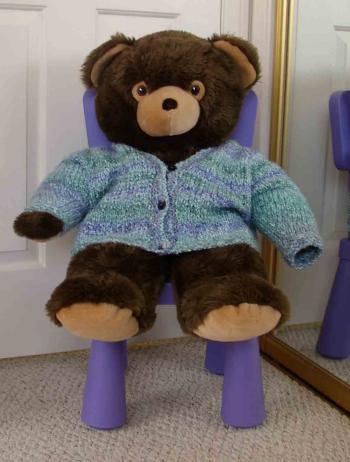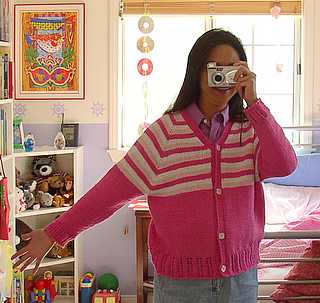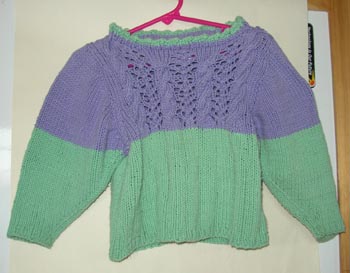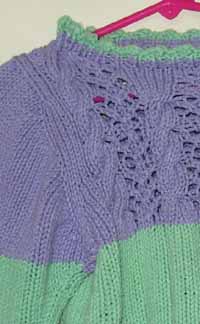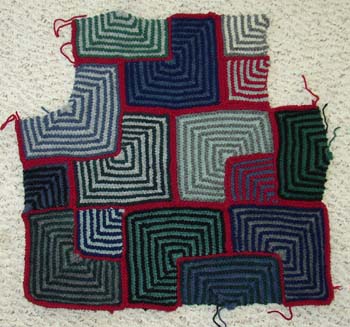In answer to questions I received, (OK, one question because the only people who read my entries are people whom I armtwist. “Didja read it yet? Didja read it yet?”) here are a few lessons learned.
I generally followed the directions given in the Sew News Threads of Distinction article. I also cruised the web and discovered some people had trouble removing the stabilizer completely or removing the residue from the basting spray. I decided to use plain old Solvy instead of the thicker Ultra Solvy. Sure enough, it dissoved fairly easily when swished around in a sink full of warm water and a little shampoo.
Further cruising seemed to indicate that the basting spray does not dissolve so a light hand is called for. I used the very minimal amount of spray that was still tacky enough to hold the fibers still as I worked. Other people’s blogs indicate that the brand of basting spray matters. I stayed away from the brand that people had trouble with and used the June Tailor basting spray as recommended by the Threads of Distinction article.
I have one beef with the ToD instructions. If you spray both layers of Solvy, then how do you lay the top one down without getting a wrinkled mess? I enlisted the help of a friend and we still had trouble laying it on straight and wrinkle-free. For the second scarf, I sprayed only the bottom layer of Solvy. I rolled the top layer of Solvy up and then carefully unrolled it over the fibers and bottom layer, starting at one scarf end and finishing at the other.
Machine stitching the grid can be rather tedious. Music and a mellow attitude helps. My sewing machine chewed up the metallic thread when I tried to use it in the needle. But the metallic thread worked great when put in the bobbin. Rather than buying multi-colored emboridery thread, I just used up all sorts of leftover colors of sewing thread. If you use different colors of thread in the bobbin and needle, you get a very neat (as in nifty-neato) look. The finished scarf looks nifty-neato but not neat.
I wrote down my process step-by-step in gory detail.
-Cut a piece of 19″ wide Sulky Solvy to the length of your scarf.
-Cut it in half lengthwise to two 9.5″ wide pieces.
-Roll one piece up and set it aside.
-Lay the other piece out on newspaper and spray enough June Tailor basting spray to make it tacky enough to hold your fibers down.
-Move the newspaper out of the way (so your fibers don’t stick to the newspaper).
-Weight the tacky Solvy down with sewing weights at the corners to keep it taut.
-Lay ribbon or ribbon yarn around the perimeter of your scarf.
-Lay a few pieces of ribbon lengthwise to give it a bit more structure.
-Lay your other yarns, fibers, fabric bits down in any way that appeals to you.
-Admire your work.
-You could try slipping the newspaper back underneath and applying more basting spray, but I wasn’t that brave.
-Carefully unroll the remaining piece of Solvy over your fiber collage.
-Pin as necessary to keep the sandwich together.
-Sew with a medium straight stitch (~2.8 mm) around the perimeter of your piece.
-Sew a mesh (both lengthwise and crosswise) about 3/4″ apart.
-Admire your work.
-Swish the piece in a sink full of warm water and a few drops of shampoo until the Solvy is completely dissoved. Rinse.
-Roll the piece up in a towel to blot the water out, then air-dry.
-Admire your work.

